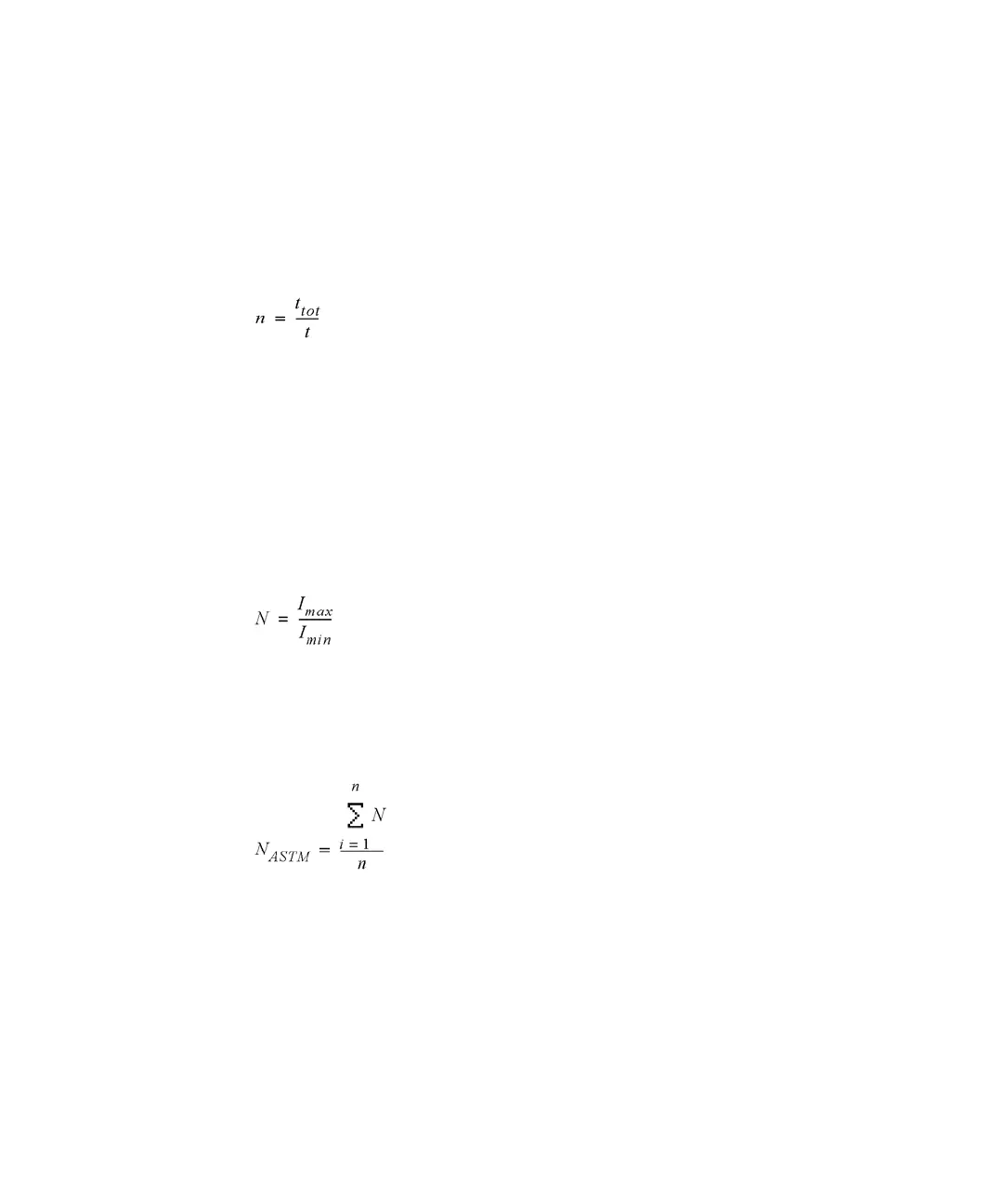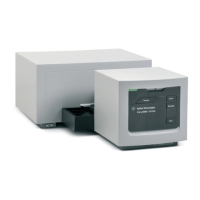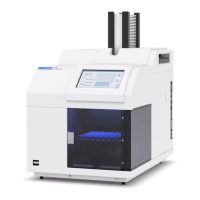238 Understanding Your Agilent ChemStation
11 Evaluating System Suitability
Noise Determination
Very-short-term noise is determined for a selected time range between 1 and
10 minutes. The time range for each cycle (dt) is set to 0.1 minute which will
give at least 10 cycles within the selected time range.
Determination of the Number of Cycles, n
where t is the cycle time and t
tot
is the total time over which the noise is
calculated.
Calculation of Peak-to-Peak Noise in Each Cycle
The drift is first calculated by determining the linear regression using all the
data points in the time range (see “Regression Analysis” on page 253). The
linear regression line is subtracted from all data points within the time range
to give the drift-corrected signal. The peak-to-peak noise is then calculated
using the formula:
where N is the peak-to-peak noise, I
max
is the highest (maximum) intensity
peak and I
min
is the lowest (minimum) intensity peak in the time range.
Calculation of ASTM Noise
where N
ASTM
is the noise based on the ASTM method.
An ASTM noise determination is not done if the selected time range is below
one minute. Depending on the range, if the selected time range is greater than,
or equal to one minute, noise is determined using one of the ASTM methods
previously described. At least seven data points per cycle are used in the
calculation. The cycles in the automated noise determination are overlapped
by 10 %.

